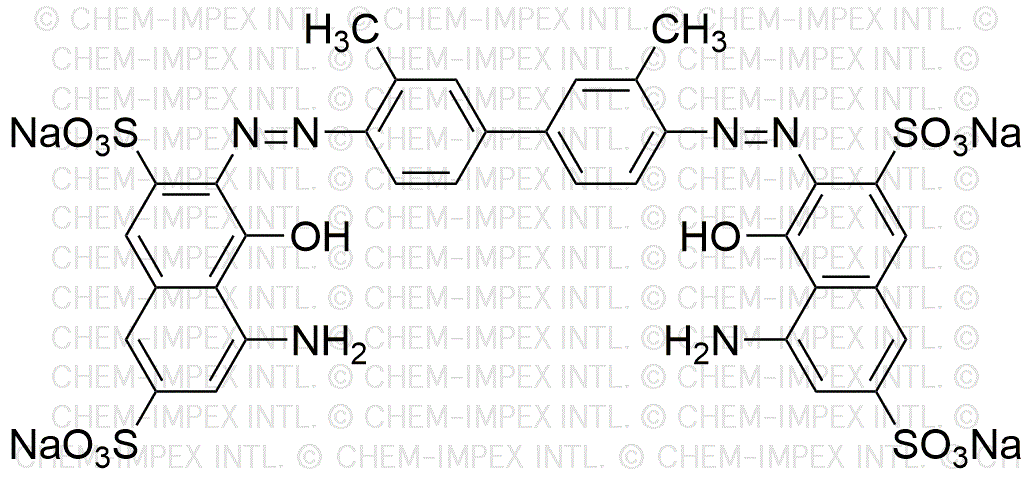Trypan blue is widely utilized in research focused on:
- Cell Viability Assessment: Commonly used in cell culture studies, it helps researchers distinguish between live and dead cells, providing critical data for experiments in fields like cancer research and drug development.
- Histology and Pathology: Employed as a staining agent, it aids in visualizing cellular structures in tissue samples, enhancing diagnostic accuracy in medical laboratories.
- Pharmaceutical Testing: Utilized in the evaluation of drug efficacy, it allows scientists to assess the impact of new compounds on cell health, streamlining the drug discovery process.
- Microbiology: In microbiological studies, it helps in identifying viable microorganisms in samples, which is essential for quality control in food and pharmaceutical industries.
- Environmental Studies: Applied in ecotoxicology, it assists in determining the effects of pollutants on aquatic life, contributing to environmental protection efforts.
General Information
Properties
Safety and Regulations
Applications
Trypan blue is widely utilized in research focused on:
- Cell Viability Assessment: Commonly used in cell culture studies, it helps researchers distinguish between live and dead cells, providing critical data for experiments in fields like cancer research and drug development.
- Histology and Pathology: Employed as a staining agent, it aids in visualizing cellular structures in tissue samples, enhancing diagnostic accuracy in medical laboratories.
- Pharmaceutical Testing: Utilized in the evaluation of drug efficacy, it allows scientists to assess the impact of new compounds on cell health, streamlining the drug discovery process.
- Microbiology: In microbiological studies, it helps in identifying viable microorganisms in samples, which is essential for quality control in food and pharmaceutical industries.
- Environmental Studies: Applied in ecotoxicology, it assists in determining the effects of pollutants on aquatic life, contributing to environmental protection efforts.
Documents
Safety Data Sheets (SDS)
The SDS provides comprehensive safety information on handling, storage, and disposal of the product.
Product Specification (PS)
The PS provides a comprehensive breakdown of the product’s properties, including chemical composition, physical state, purity, and storage requirements. It also details acceptable quality ranges and the product's intended applications.
Certificates of Analysis (COA)
Search for Certificates of Analysis (COA) by entering the products Lot Number. Lot and Batch Numbers can be found on a product’s label following the words ‘Lot’ or ‘Batch’.
*Catalog Number
*Lot Number
Certificates Of Origin (COO)
This COO confirms the country where the product was manufactured, and also details the materials and components used in it and whether it is derived from natural, synthetic, or other specific sources. This certificate may be required for customs, trade, and regulatory compliance.
*Catalog Number
*Lot Number
Safety Data Sheets (SDS)
The SDS provides comprehensive safety information on handling, storage, and disposal of the product.
DownloadProduct Specification (PS)
The PS provides a comprehensive breakdown of the product’s properties, including chemical composition, physical state, purity, and storage requirements. It also details acceptable quality ranges and the product's intended applications.
DownloadCertificates of Analysis (COA)
Search for Certificates of Analysis (COA) by entering the products Lot Number. Lot and Batch Numbers can be found on a product’s label following the words ‘Lot’ or ‘Batch’.
*Catalog Number
*Lot Number
Certificates Of Origin (COO)
This COO confirms the country where the product was manufactured, and also details the materials and components used in it and whether it is derived from natural, synthetic, or other specific sources. This certificate may be required for customs, trade, and regulatory compliance.


